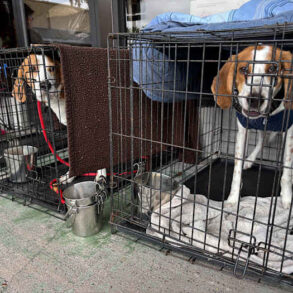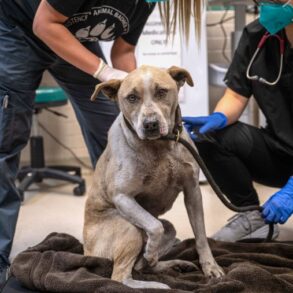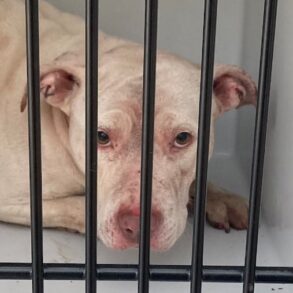-
A 2015 report published by a private genomics testing company found that 2% of 345 hot dogs tested contained traces of human DNA.
-
However, it was unclear whether that report was a peer-reviewed study, and it contained limitations in its reporting requirements. It was unknown how project leaders tested the hot dogs, what kind or brand(s) of hot dogs they tested, and whether they considered the possibility of cross-contamination affecting results.
-
No other study has corroborated the 2015 report’s findings, based on our research.
-
Snopes contacted the genomics testing company, Clear Labs, and the study’s author to learn more about how they conducted the research. We will update this article if we receive a response.
For nearly a decade, social media users have claimed that traces of human DNA exist in hot dogs. A study cited by many people was first published in 2015 and resurfaced in 2024. One recent example on X (archived) had been viewed more than 1.9 million times:
The post above included a 2015 CBS News segment titled “Report has stunning revelations for contents of hot dogs.” It covered an analysis published by Clear Labs, a private genomics testing company headquartered in California. News outlets including The Independent, USA Today and ABC News also covered the report at the time.
Clear Labs wrote in a single document released on Oct. 17, 2015, that 2% of 345 hot dogs it tested contained traces of human DNA.
Advertisement
Advertisement
However, it was unclear whether this report was peer-reviewed or published in a reputable journal—Snopes found no record of either. The report also did not provide details about how the authors came to their conclusions, such as how they tested the hot dogs, what kind of hot dogs they tested, and whether they considered the possibility of cross-contamination affecting results.
“It’s pretty unlikely that the human DNA piece is actually harmful to consumer health,” Mahni Ghorashi, a Clear Labs founder, told The New York Times in 2015. “We consider it more of a hygienic issue that degrades the quality of the food.”
Snopes contacted Clear Labs and the report’s author to learn more about how they conducted the research. We will update this article if we receive a response.
What We Know About the Study
Clear Labs published the analysis in a PowerPoint slide titled “Next Generation Sequencing as a Novel Tool for Quality Control of Food Products: Hotdog Study.” Authors used gene sequencing technology, which was pioneered by the Human Genome Project, to look at “bar code” regions of the genome to “give an accurate report of species present in food products.”
Advertisement
Advertisement
DNA samples were extracted from 345 purchased hot dog products, of which 2% were reportedly found to have contained human DNA.
(Clear Labs)
But unlike most peer-reviewed research, this document was not transparent in how project leaders conducted the testing and reporting.
The report did not list what type of hot dogs were tested, their labeled ingredients or the processing facilities where they were manufactured.
Without further information, it’s impossible to independently determine the potential origins of the alleged human DNA, such as whether it could have come from the researchers themselves.
Advertisement
Advertisement
No other study has corroborated the 2015 report’s findings, based on our research.
Snopes reported in 2015 when the study first appeared:
Missing from the bevy of articles about human DNA in hot dogs (and meat in veggie dogs) was any explanation about how Clear Food determined those percentages, under which conditions testing occurred, whether any independent entities confirmed or duplicated the claims, and the methodology by which Clear Food arrived at their overall conclusions. Information on the site and Clear Food’s Kickstarter provided no information about their testing methods, the credibility of their research, or (most important) what the company’s specific objective might be. The flurry of interest bore many similarities to an earlier report claiming California wine was contaminated with arsenic, peddled by a company that tested alcoholic beverages for “purity.” Clear Food similarly touted its “Clear Score,” aimed “to reward the brands with the highest average scores” based on criteria known only by Clear Food.
[…]
Clear Food didn’t define the terms that they used to describe their findings, such as “genomic analysis technology” (unspecified) or “proprietary next-generation genomic sequencing workflow.” Certain brands were deemed “problematic” at a rate of 14.4 percent, but again, no evidence was presented to substantiate that claim or establish the methodology as worthy of consideration. In short, while the results could bear out to some degree should testing be conducted in a scientific setting, Clear Food didn’t appear to be an established laboratory presenting vetted data.
In 2021, Snopes reported regulations established by the U.S. Food and Drug Administration set a maximum level of “natural or unavoidable defects that present no health hazards for humans” in food. According to the FDA:
Under federal law, the FDA is given the power to establish maximum levels of natural substances that unintentionally contaminate food for human consumption because the agency concluded that it is impractical to “grow, harvest, or process raw products that are totally free of non-hazardous, naturally occurring, unavoidable defects.” This does not mean that the FDA approves of such additions or that it even finds levels acceptable as long the food manufacturer stays just below the level.
Snopes’ archives contributed to this report.
Sources:
Dapcevich, Madison. “Does Ground Coffee Contain Cockroaches?” Snopes, 9 Mar. 2021, https://www.snopes.com//fact-check/cockroaches-in-ground-coffee/.
—. “Snopes Tips: Why Care If Research Is ‘Peer-Reviewed’?” Snopes, 30 Mar. 2022, https://www.snopes.com//news/2022/03/30/snopes-tips-why-care-if-research-is-peer-reviewed/.
Advertisement
Advertisement
DNA Sequencing Fact Sheet. https://www.genome.gov/about-genomics/fact-sheets/DNA-Sequencing-Fact-Sheet. Accessed 7 Jan. 2025.
Durando, Jessica. “Report: Human DNA Found in Hot Dogs.” USA TODAY, https://www.usatoday.com/story/news/nation-now/2015/10/26/report-human-dna-found-hot-dogs/74617102/. Accessed 7 Jan. 2025.
“Homepage.” Clear Labs, https://www.clearlabs.com/. Accessed 7 Jan. 2025.
LaCapria, Kim. “Franks and Genes.” Snopes, 26 Oct. 2015, https://www.snopes.com//fact-check/clear-foods-hot-dog-dna-study/.
News, A. B. C. “Some Hot Dogs, Sausages Studied Contain Human DNA, Says New Report.” ABC News, https://abcnews.go.com/Health/hot-dogs-sausages-studied-human-dna-report/story?id=34739080. Accessed 7 Jan. 2025.
Advertisement
Advertisement
Report Has Stunning Revelations for Contents of Hot Dogs – CBS News. 25 Oct. 2015, https://www.cbsnews.com/news/report-2-percent-of-hot-dogs-have-human-dna/.
“Study Finds Pork and Human DNA in Vegetarian Hotdogs.” The Independent, 27 Oct. 2015, https://www.the-independent.com/news/science/hot-dog-sausages-contain-human-dna-study-says-and-many-vegetarian-ones-contain-meat-a6710341.html.
The Human Genome Project. https://www.genome.gov/human-genome-project. Accessed 7 Jan. 2025.
This post was originally published on this site be sure to check out more of their content.










































